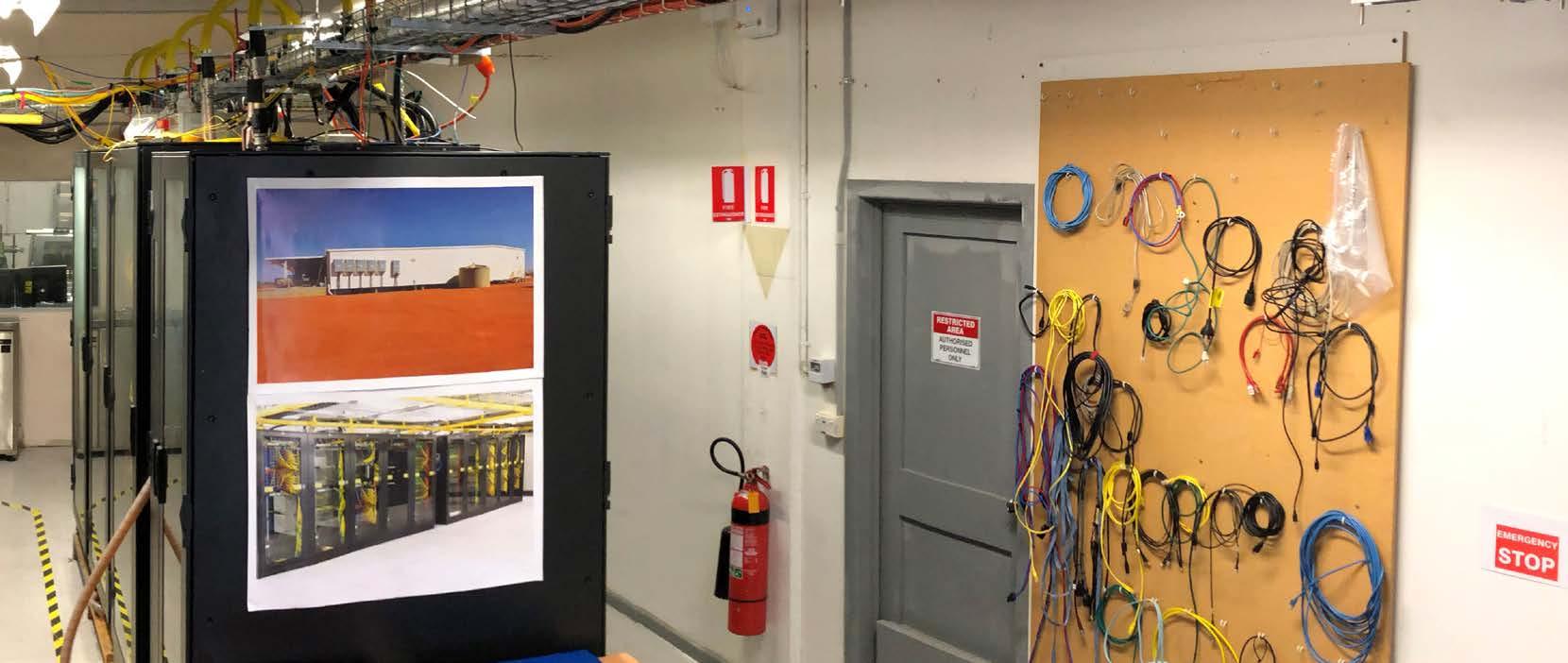
3 minute read
New SKA-Low prototype system integration facility takes shape
from Contact 03
Out the back of CSIRO’s Astronomy and Space Science headquarters in suburban Sydney is the world’s most advanced ‘shed’. Unremarkable from the outside, this high-tech haven is where research engineers escape their offices to road-test technologies and piece together next generation radio telescopes. Despite the raging bushfires which blanketed Sydney in smoke over Summer, a dedicated team led by Research Engineer Dr Grant Hampson, transformed this workshop to create an integration test facility for the SKA-Low telescope.
Until recently, the 180 square metre space was used to test technologies for the Australian Square Kilometre Array Pathfinder (ASKAP) radio telescope. ASKAP is now operational, and the test facility has become the SKA-Low Prototype System Integration facility (SKA-Low PSI) – aimed at accelerating the development of SKA-Low.
The SKA-Low PSI will mimic the Murchison Radio-astronomy Observatory’s “super-computing” control building – a major centre of telescope control, monitoring, signal processing and communications. The new test facility offers a geographically accessible location for the SKALow telescope’s digital ‘backend’ prototypes.

The new SKA-Low Prototype System Integration facility at CSIRO’s Astronomy and Space Science division in Sydney.
Credit: CSIRO
The SKA-Low PSI is enabling engineers to set up the telescope’s electronic systems and experience some realworld challenges in an environment that mimics the site central facility. They can be executing continual tests which allows them to resolve issues and iron out unforeseeable bugs.
Hampson says there can be physical bugs, like a square connector versus a round connector – the classic square peg in a round hole. It may be surprising that an international project at the cutting edge of technology could encounter such a basic problem. However, these are very common and unavoidable in projects of this scale.
‘Integrate early and often’ is a common saying in the engineering world. Bringing parts of the telescope together through early integration is a valuable opportunity to run tests, join the dots, and deliver precious savings in project time and money.
“We’re going into this next phase of bridging to try and de-risk some of those interfaces and some of the test infrastructure needed to do that,” says Hampson. “It’s an important facility because you’re looking at the integration of products for SKA - it’s not only hardware but it’s software as well.”
Dr Grant Hampson, Research Engineer

Yuqing Chen, CSIRO System Engineer, standing next to the upgraded Italian Frigo liquid chiller for the SKA-Low PSI facility.
Credit: CSIRO
Apart from the physical bugs, the software must ‘talk to each other’, and these software interfaces can also be driven through the SKA-Low test facility. SKA data flows are very complicated and testing these at the SKA-Low PSI gives developers the time they need to work through many of the complexities.
Most SKA products are developed independently, in local manufacturing and test facilities around the world in the various member countries. However, at some point they need to come together for a complete demonstration. The SKA-Low PSI will initially be this place, and colleagues can come and tour the facility and see all the products in one place.
The SKA Office plays the important role of identifying the next product to be brought in for testing, and SKAO will be sending someone to work in the facility with the Low PSI team.
In construction, the SKA-Low PSI will be superseded with the Assembly Integration Verification (AIV) System Integration Test Facility (ITF) to be located in Geraldton, Western Australia. The AIV System ITF will be used for ‘qualifying’ products before they are placed on site.
The SKA-Mid telescope is also working on a PSI facility. Hampson says together we can learn a lot and help each other get SKA up and running.

Grant Hampson, CSIRO Research Engineer, takes the Australian Telescope National Facilities (ATNF) Steering Committee on a tour of the SKA-Low PSI facility.
Credit: CSIRO
By Annabelle Young (CSIRO)

